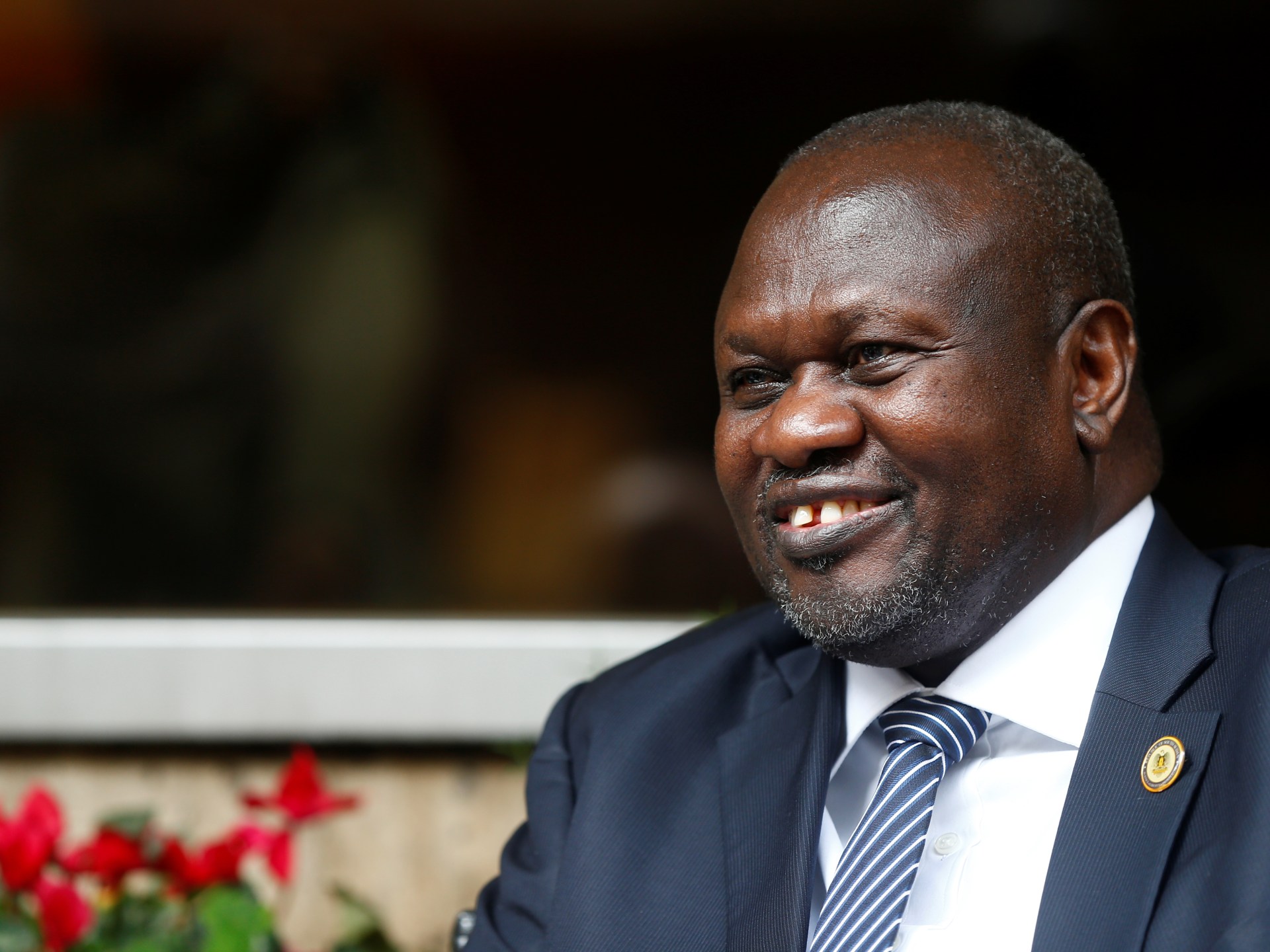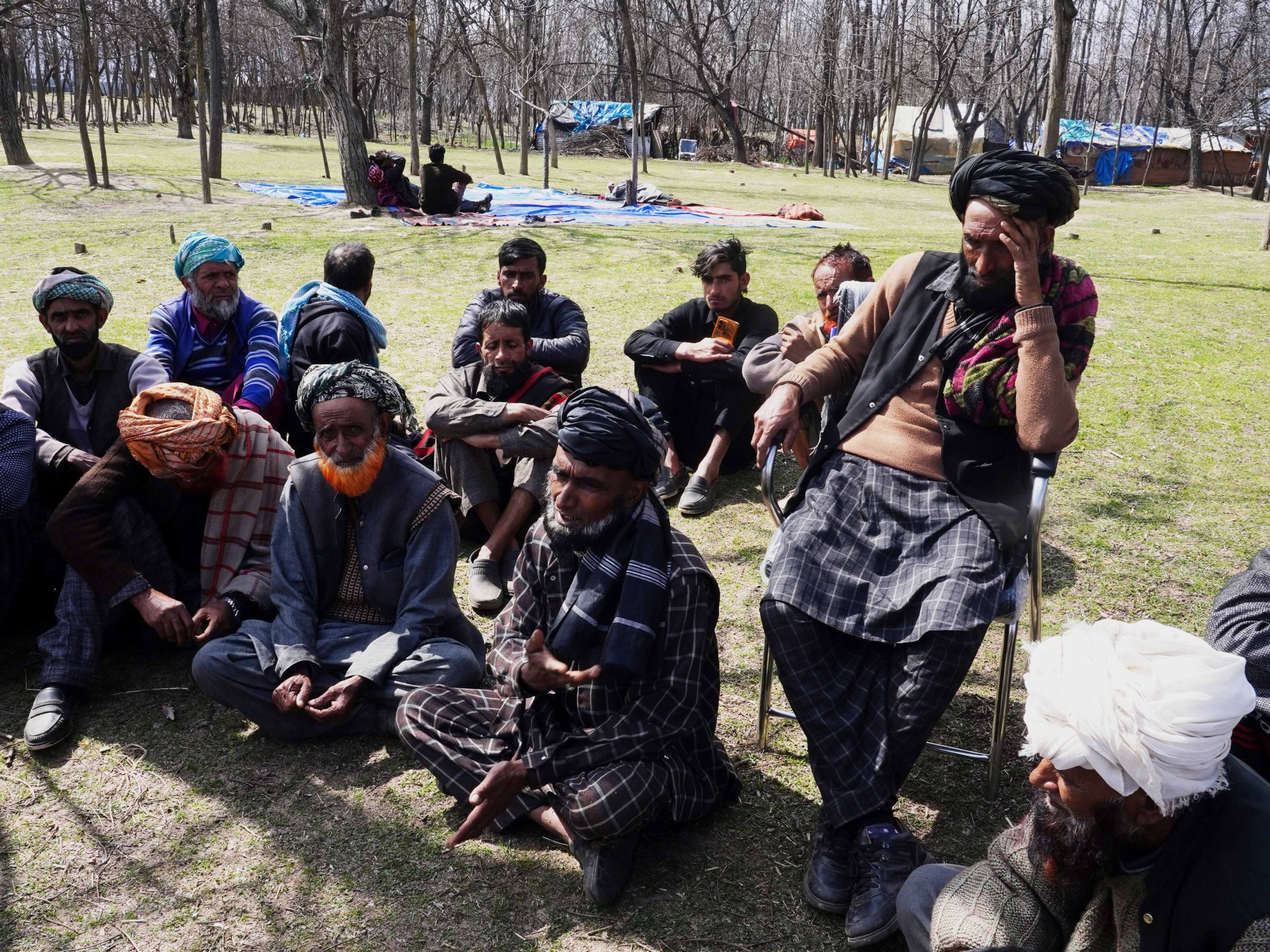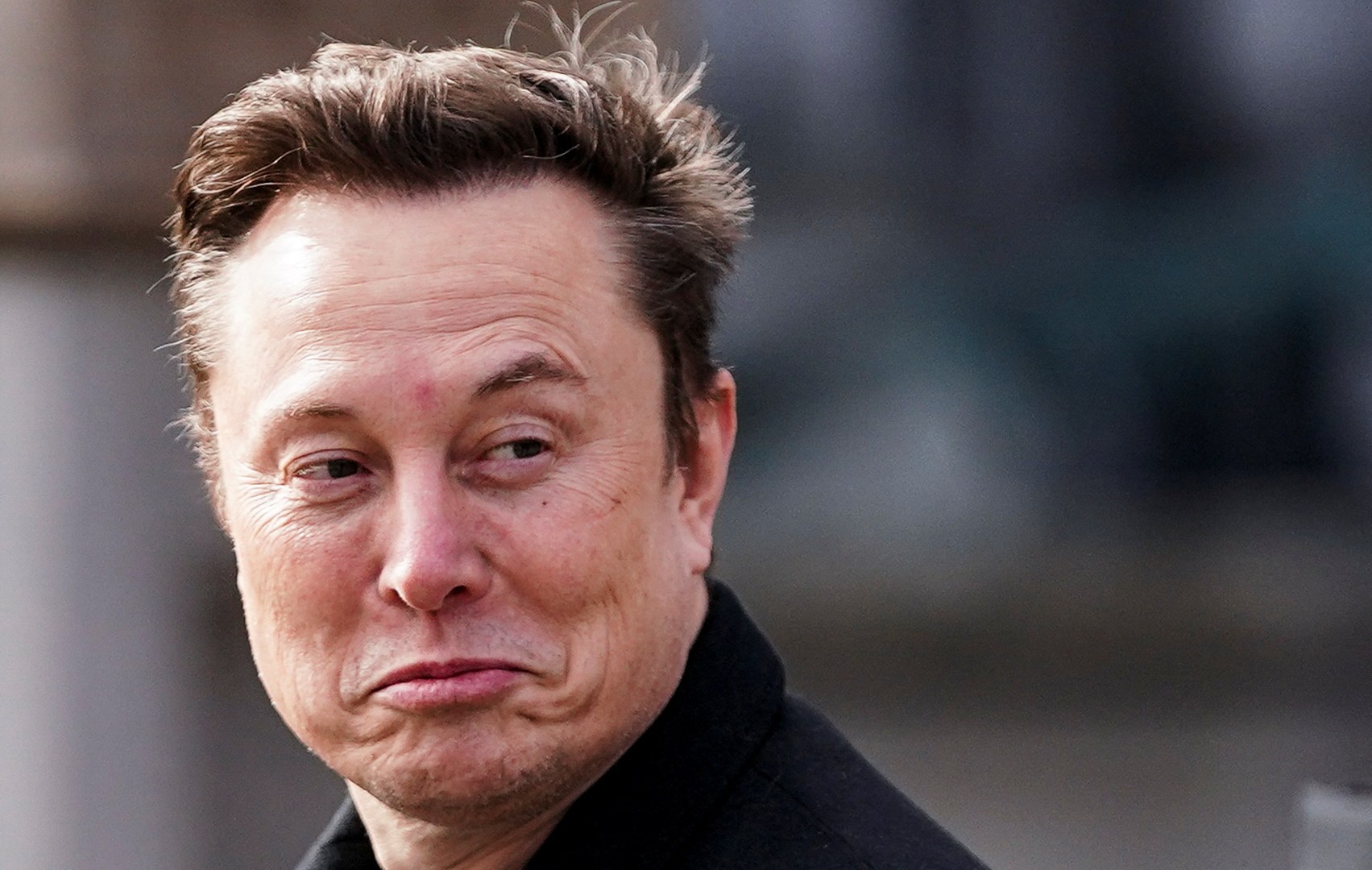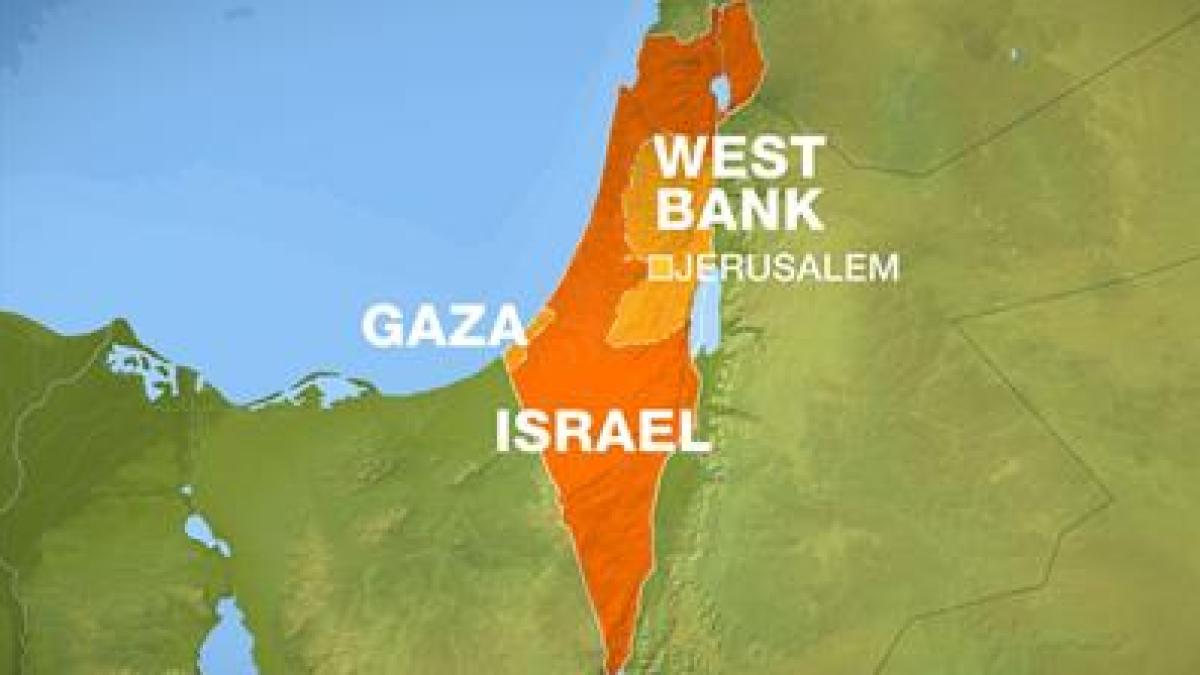Conflict Zones
UN warns of conflict in South Sudan amid reports of VP Riek Machar’s arrest | Riek Machar News

First Vice President Riek Machar reportedly arrested after armed convoy led by government officials entered his residence in the capital, Juba.
The United Nations Mission in South Sudan (UNMISS) has called on all parties to exercise restraint amid reports of the arrest of First Vice President Riek Machar – the longtime rival of the country’s President Salva Kiir.
UMISS chief Nicholas Haysom said the country risked losing the “hard-won gains of the past seven years” if the world’s newest nation returned to “a state of war”, following reports that Machar was arrested at his residence in the capital, Juba.
“Tonight, the country’s leaders stand on the brink of relapsing into widespread conflict or taking the country forward towards peace, recovery and democracy in the spirit of the consensus that was reached in 2018 when they signed and committed to implementing a Revitalized Peace Agreement,” Haysom said in a statement released early Thursday.
A return to fighting “will not only devastate South Sudan but also affect the entire region”, Haysom added.
According to Machar’s Sudan People’s Liberation Army In Opposition (SPLM/IO) party, a convoy of 20 heavily armed vehicles “forcefully entered” the first vice president’s residence in Juba and disarmed his bodyguards on Wednesday.
The country’s defence minister and chief of national security were in the convoy that delivered an arrest warrant to the vice president, the SPLM/IO said,
“An arrest warrant was delivered to him under unclear charges,” according to a statement, which was shared on Facebook by Reath Muoch Tang, chairman of Machar’s foreign relations committee.
“This act is a blatant violation of the Constitution and the Revitalized Peace Agreement, as no legal procedures such as lifting his immunity have been followed,” Tang said.
“The arrest of the First Vice President without due process undermines the rule of law and threatens the stability of the nation,” he said.
A government spokesperson could not be immediately reached for comment.
Earlier on Wednesday, the UN reported clashes over the past 24 hours between forces loyal to President Kiir and Vice President Machar outside the capital Juba.
Peace deal unravelling
A power-sharing deal between Kiir and Machar has been unravelling over recent weeks amid tension as government troops loyal to the president have battled fighters of the so-called White Army, which has close ties to Machar.
In response to fighting since late February in the northeastern Upper Nile State, Kiir’s government has detained several officials from Machar’s party, including the petroleum minister and the deputy head of the army.
Machar’s party also said a military base and two military training centres around Juba had been attacked by government forces since Monday.

The training centres were established to prepare Kiir’s opposition forces for integration into the unified army, a key provision of the 2018 peace agreement aimed at uniting government and opposition troops.
None of the incidents have been confirmed by the Kiir-aligned army, the South Sudan People’s Defence Forces (SSPDF), though it accused Machar’s forces of aggressive manoeuvres from one of the bases on Monday.
Analysts say that an ageing Kiir, 73, has been seeking to ensure his succession and sideline Machar politically for months through cabinet reshuffles.
South Sudan, the world’s youngest country, fell into a bloody civil war soon after gaining independence in 2011, as forces aligned with Kiir, an ethnic Dinka, fought those loyal to Machar, an ethnic Nuer.
The conflict killed more than 40,000 people before a 2018 peace deal saw the pair form a government of national unity.
The clashes and latest political tensions between Kiir and Machar have unsettled many in Juba.
The Norwegian and German embassies have closed while the the British and United States embassies said they were reducing to minimal staffing and have urged citizens to leave the country.
Conflict Zones
Wave of Kashmir disappearances, mystery deaths spook tribal community | Conflict

Kulgam, Indian-administered Kashmir — When Showkat Ahmad’s body was found, it had sores and a bloodied eye. His hair was falling out, and the skin on the 18-year-old’s hands and legs was peeling off, recalled his father, Mohamad Sadiq.
That was March 16, three days after Sadiq had learned that his elder son, Riyaz, 25, had also died, a month after the two young men had disappeared.
According to the official verdict of law enforcement officials, Showkat and Riyaz drowned in a canal in the Kulgam region of Indian-administered Kashmir, about 10km (6 miles) from their homes. Their postmortem reports point to potential suicide.
But Sadiq — and many in the Gujjar tribal community the family belongs to — refuse to believe that narrative. Sadiq conceded that he is not sure who is responsible for the disappearance and death of his sons — whether it was security agencies or an armed group. Yet, whoever it was, Sadiq said he is convinced there was foul play involved.
“This wasn’t an accident,” the 72-year-old father screamed, his voice cracking with anguish as he spoke to Al Jazeera outside his home, in an open grazing ground, where his relatives and family members had gathered to offer him support. “They were tortured and killed.”
Even as the government denies those accusations, the disbelief over its narrative captures the deep distrust of law enforcement officials in a region shaken by a spate of recent disappearances — with dead bodies turning up weeks later. Mukhtar Ahmad Awan, a 24-year-old man who also disappeared along with Riyaz and Showkat, has still not been found.
That lack of belief in the government is accentuated by Kashmir’s history. Since the start of an armed revolt against India in 1989, between 8,000 and 10,000 Kashmiris have disappeared, according to the Association of Parents of Disappeared Persons (APDP), a collective of relatives of victims of enforced disappearances in Kashmir.
“My sons were brutally murdered,” Sadiq insisted.

A tragic wedding visit
In the quiet grazing grounds of Chandarkoot, about 68km (39 miles) from Srinagar, the biggest city in Kashmir, a hilly landscape covered with walnut and willow trees shelters flocks of sheep belonging to the local Gujjar community.
On February 13, Riyaz, Showkat and Mukhtar left the nearby village of Qazigund to attend a wedding in the nearby Ashmuji area of Kulgam district. They never reached the venue.
Sadiq tried calling his sons on their mobile phones at about 6:10pm, he said. But the phones were switched off.
“We desperately searched for them near the function venue, in Kulgam, and all the places we could think of,” he said. At 7pm, the family alerted the police. When the youths still had not returned by the next morning, they filed a complaint about them being missing with the police.
For a month, police, the army and local rescue teams searched for them, but could not find anyone. Then, on March 13, Sadiq’s phone rang.
The searchers had found Riyaz’s body in a canal. Three days later, Showkat’s body also turned up in the same canal.
Forensic expert Azia Manzoor Bhat, who examined Riyaz’s body at District Hospital Kulgam during the postmortem, told reporters that the body was in an “advanced stage of putrefaction”. His examination, Bhat said, suggested that Riyaz died of drowning and gave no indication of homicide — instead indicating possible death by suicide.
Showkat too died of drowning, according to authorities.
But protests have broken out over the deaths, which have ballooned into a political controversy. Sadiq and his family protested on the national highway that connects Srinagar, the summer capital of Jammu and Kashmir, to Jammu, the winter capital, demanding an inquiry.
A video purportedly showing a police officer kicking a female protester on the national highway went viral.
Meanwhile, in Jammu district, approximately 198km (123 miles) away from the site of the protest, police arrested student leaders from the Kashmiri Gujjar community as they protested against the Kulgam deaths.
The police have announced an internal investigation into the accusations of an officer kicking a protester. In the Jammu and Kashmir Legislative Assembly, leaders from the governing National Conference and opposition parties, including the Congress, Peoples Democratic Party and People’s Conference, demanded action against the police personnel involved in the kicking incident.
There has been no official statement from Chief Minister Omar Abdullah on the kicking incident, nor on the disappearances and deaths.

Surge in mysterious disappearances and deaths
To Sadiq and others demanding an investigation, the deaths of Riyaz and Showkat, and Mukhtar’s disappearance, follow an increasingly worrying pattern.
In Kathua district, neighbouring Kulgam, two young men, Yogesh Singh, aged 32, and Darshan Singh, 40, and 15-year-old Varun Singh went missing on March 5 while returning from a wedding.
Their bodies were recovered from a canal three days later.
Days later, two other teenagers — Mohammad Din and Rehman Ali — went missing in Kathua. They are yet to be found almost a month later.
They are Muslim, the three men who disappeared before them were Hindu — all bound by tragedy.
But fear of the government and security forces runs particularly deep in the Gujjar community, following a series of killings and unnatural deaths in recent years. The community, along with an ethnic subgroup known as the Bakarwals, constitutes about 8 percent of the population of Jammu and Kashmir, according to India’s last census in 2011, though some community representatives argue that their numbers are underrepresented because of their nomadic lifestyle.
In 2020, an Indian army officer allegedly abducted and killed three young Gujjar men in Rajouri district. The police filed a chargesheet against the officer, accusing him of abducting and killing the three labourers in a staged encounter. A court martial held the officer guilty and recommended life imprisonment. But in November 2023, an Armed Forces Tribunal suspended the sentence and granted bail to the officer, while the case continues to be heard.
Three years later, in December 2023, following an attack by armed fighters on army vehicles in Poonch district’s Topa Pir village, security forces detained many locals for interrogation. Subsequent videos surfaced showing officers beating civilians and applying chilli powder to their wounds. Three Gujjar men — Mohammad Showkat (22), Safeer Hussain (45), and Shabir Ahmad (32) — died in custody, with their bodies displaying signs of severe torture.
Then, starting in December 2024, 17 people from the community died under mysterious circumstances in a little over a month. The victims, including 13 minors, exhibited symptoms such as fever, vomiting, and abdominal pain before their deaths. Investigations ruled out viral or bacterial infections, with preliminary findings suggesting neurotoxins as the likely cause. Despite extensive testing, the exact toxin and its source remain unidentified, leaving the community in fear and seeking answers.
In February 2025, a 25-year-old Gujjar man, Makhan Din, recorded a video explaining why he was about to kill himself — detailing alleged torture at the hands of security forces.
Din, who died by suicide, was questioned over suspicious Pakistani contacts — and was not tortured — the police claimed.
That is not a story many Kashmiri Gujjars believe.
“Our people disappear, and we are told to stay quiet,” said Abid Awan, an 18-year-old neighbour of Sadiq in Kulgam.
“We live in fear, knowing that our voices are ignored, and our suffering is dismissed. It feels like we don’t exist to those in power.”

‘Waiting for death’
Chandi Awan’s frail hands trembled as the 80-year-old father of Mukhtar, the missing 24-year-old in Kulgam, clutched his walking stick.
“Mukhtar was the light of my eyes. Without him, my world has fallen into darkness,” Awan said, surrounded by grieving relatives, as he sat outside his house, approximately 12km (7.5 miles) from Sadiq’s home. “The pain is unbearable – it feels as though I am waiting for death.”
Mohammad Jeelani Awan, Mukhtar’s brother, said the government’s explanation for the deaths of Showkat and Riyaz does not make sense. “Their belongings, including cards, mobile phones, and cash, were dry. How is this possible?” he said.
Every night, as he tries to sleep, all he sees is his brother’s face, he said.
“The smile that once lit up our home, the dreams he had. It’s hard to believe he’s gone, taken from us in such an unforgiving way. I can’t help but feel I failed him, that I couldn’t protect him,” said Jeelani, letting out a scream. “I wish there was a way to turn back time, to give him the life he deserved.”
The families say they will continue to seek justice.
“We will not let this go, and demand a fair and independent probe,” said 65-year-old Ghulam Nabi, uncle of Showkat and Riyaz.
Meanwhile, Riyaz’s wife, Najma Begum, sat quietly in a corner of her one-storey house, her face pale, eyes swollen from the tears. In one hand she clutched a handkerchief, and in the other a photograph of her husband. Silent sobs shook her body as she stared at the photograph, then hugged her eight-year-old daughter.
“All we want is justice, nothing more, nothing less. If the law truly exists, we will get justice,” she cried.
“They have killed him. They have killed my Riyaz.”
Conflict Zones
Musk vs Navarro: Is the Trump team divided on tariffs? | Donald Trump News

United States President Donald Trump has doubled down on his tariffs plan, even as markets crash around the world.
However, signs of divisions among Trump’s aides are emerging with key ally Elon Musk publicly clashing with trade adviser Peter Navarro on Saturday. Others have also presented diverging narratives.
Here is more about what has happened:
What happened between Musk and Navarro?
On Wednesday, Trump announced sweeping tariffs impacting most of America’s trading partners. This marked a major break from decades of US trade policy and sparked criticism and concern from economists and countries targeted by Trump’s tariffs.
In the aftermath, the three major stock indices in the US – the Dow Jones Industrial Average, S&P 500 and Nasdaq – dropped by more than 5 percent over the past week. This marked the biggest stock market drop in the US since 2020 during the COVID-19 pandemic.
Longtime Trump aide and the administration’s senior counsellor for trade and manufacturing, Peter Navarro, defended the tariffs in an interview with CNN on Thursday.
“The market will find a bottom. It will be soon, and from there, we’re going to have a bullish boom, and the Dow is going to hit 50,000 during Trump’s term,” Navarro said. As of Monday, the Dow Jones stood at 38,314 before the start of trading.
After an X user posted a clip of Navarro speaking to CNN and alluded to the adviser’s doctorate from Harvard University, Musk hit back on the platform, which he owns.
“A PhD in Econ from Harvard is a bad thing, not a good thing,” Musk posted.
The first phase of the new tariffs – 10 percent levies on countries including the United Kingdom, Australia, Argentina and Saudi Arabia – came into effect on Saturday.
Higher levies that Trump calls reciprocal tariffs are scheduled to come into effect on Wednesday against countries including China and India.
What did Musk say about tariffs on Europe?
The hit against Navarro hasn’t been Musk’s only comment on tariffs in recent days.
On Saturday, Musk – who oversees the Department of Government Efficiency (DOGE), tasked by Trump to slash government spending – joined a conversation by videolink with Italian Deputy Prime Minister Matteo Salvini, the leader of the far-right League party.
During this conversation, Musk voiced hopes for “a zero-tariff situation” between the US and Europe, even as Trump has imposed 20 percent tariffs on the European Union.
“I hope it is agreed that both Europe and the United States should move ideally, in my view, to a zero-tariff situation, effectively creating a free-trade zone between Europe and North America,” Musk said.
Musk – the world’s richest man, who is CEO of SpaceX and Tesla and the largest shareholder of both firms – has seen his firms face setbacks in recent weeks. In Europe alone, Tesla’s sales have plunged by 49 percent in January and February when compared with the same months in 2024, according to a March 25 report published by the European Automobile Manufacturers’ Association.
Tesla’s share price has also stumbled. It’s about half of what it was in December.
How has Navarro responded?
In a Fox News interview on Sunday, Navarro responded to Musk’s comments about the tariffs in Europe.
“It was interesting to hear Elon Musk talk about a zero-tariff zone with Europe. He doesn’t understand that,” Navarro said.
“The thing that I think is important about Elon to understand is he sells cars. That’s what he does,” Navarro added, suggesting that Musk’s comments on tariffs were linked to his business interests.
What had Musk said earlier about tariffs?
Last month, Tesla warned the US government that tariffs could harm electric vehicle companies when Trump’s tariff targets impose their own levies on American products.
In an unsigned letter to US Trade Representative Jamieson Greer, Tesla said: “US exporters are inherently exposed to disproportionate impacts when other countries respond to US trade actions.”
The company added: “Past trade actions by the United States have resulted in immediate reactions by the targeted countries, including increased tariffs on electric vehicles imported into those countries.”
On March 26, Trump imposed 25 percent tariffs on car imports and certain automobile parts.
In response to this, Musk wrote on X: “Important to note that Tesla is NOT unscathed here. The tariff impact on Tesla is still significant.”
Are there other signs of splits within Team Trump?
Commerce Secretary Howard Lutnick told CBS News on Sunday that the 10 percent baseline tariffs will “stay in place for days and weeks” and the higher reciprocal tariffs would also take effect.
However, on the same day, Treasury Secretary Scott Bessent told NBC’s Meet The Press that more than 50 countries had reached out to Washington for negotiations to cut the levies. “The market consistently underestimates Donald Trump,” he said in response to the market crashes.
Also on Sunday, CNN anchor Jake Tapper asked Agriculture Secretary Brooke Rollins whether the tariffs are here to stay like Trump and Lutnick have said. Rollins did not directly answer this question.
Conflict Zones
Palestinian-US teen killed by Israeli settler in the occupied West Bank | Occupied West Bank News

Palestinian officials identified the 14-year-old US citizen as Omar Mohammed Rabea.
A Palestinian-American teenager has been shot and killed by an Israeli Jewish settler in the occupied West Bank, Palestinian authorities have said.
Palestinian officials identified the 14-year-old as Omar Mohammed Rabea and said he was near a settlement in Turmus Aya when the settler opened fire.
There have been sharp rises in settler violence, incursions, attacks and arson against Palestinians and their property in the territory since Israel’s war in Gaza began. The Israeli army has also been carrying out a sustained assault on the territory in various cities and towns.
Rabea was shot along with two other teenagers by the settler, said the town’s Mayor Adeeb Lafi.
Palestinian officials condemned the shooting. “This is yet another example of the ongoing Israeli settler violence against Palestinians, with impunity,” one official said.
The victim’s family has not yet made a public statement, but they have expressed their grief over their loss.
International criticism of Israeli settlement expansion and Jewish settler violence has been mounting, drawing condemnation from human rights groups worldwide.
Israeli forces have opened an investigation into the killing, but there has been no immediate comment from authorities. The Israeli military and settlers operate for the most part without fear of judicial repercussions in Palestinian areas.
There have been several cases of US citizens being killed by Israelis in the occupied West Bank.
In 2024, Aysenur Ezgi Eygi, a 26-year-old Turkish-American activist, was shot in the head by an Israeli soldier while protesting against illegal Israeli settlements, according to witnesses.
Shireen Abu Akleh, a Palestinian-American journalist for Al Jazeera, was also killed by the Israeli military in 2022 while reporting in the occupied West Bank, despite being clearly identified as a member of the press.
-

 Europe2 days ago
Europe2 days agoLive updates: Global markets plunge on Trump’s tariff turmoil
-

 Education1 day ago
Education1 day ago‘All Boys Aren’t Blue’ and ‘Gender Queer’ top 2024 list of most ‘challenged’ library books
-

 Sports1 day ago
Sports1 day agoThis American golfer won $1.5 million in a tournament. Here’s why he couldn’t cash the check
-

 Sports1 day ago
Sports1 day agoUConn dominates South Carolina to capture women’s record 12th NCAA Tournament title
-

 Europe1 day ago
Europe1 day agoLudwig Mies van der Rohe’s iconic furniture line is getting its first update in decades
-

 Middle East1 day ago
Middle East1 day agoAlliance of Sahel States recalls ambassadors as tension with Algeria rises | News
-

 Conflict Zones1 day ago
Conflict Zones1 day agoMusk vs Navarro: Is the Trump team divided on tariffs? | Donald Trump News
-

 Middle East2 days ago
Middle East2 days agoIsraeli strike on media tent extends journalist death toll in Gaza | Israel-Palestine conflict News




